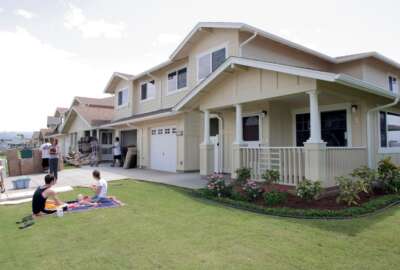
Austin tops areas with large military housing allowance increases in 2020
Changes in the 2020 Basic Allowance for Housing rates vary widely across the U.S., with some locales seeing increases of nearly 30% and others falling by more than...
The Pentagon on Thursday released its annual list of the housing allowances military service members based in the U.S. will receive next year, showing a nationwide average increase of 2.8%.
But as is the case every year, there is wide variation in the annual changes depending on where a military member is stationed and their paygrade. A Federal News Network analysis of 2019 and 2020 Defense Department data shows some of the more than 300 military housing areas will see average increases of nearly 30%, while some will fall by as much as 10%.
Austin, Texas, will get the biggest Basic Allowance for Housing (BAH) increase, based on an average of all paygrades there at the “with dependent” rate. The stipends at the new home of the Army’s Futures Command will rise by between 16%-45%, depending on rank, for an average increase of 29%.
The data also show large increases in other locations, for example: at Mountain Home Air Force Base in Idaho (21%), and in the Atlanta (15%) and Mobile, Alabama, (15%) markets.
Meanwhile, some of DoD’s designated military housing areas will see significant decreases. BAH rates at Fort Polk, Louisiana, will drop by an average of more than 7%. Cleveland, Ohio, and Paducah, Kentucky, will have even larger decreases: 8% and 10%, respectively.
However, under Defense Department policy, no service members living in housing areas whose rates are falling will actually see decreases in their take-home pay. As long as they’re eligible for BAH payments, they’ll continue to be paid at the previous year’s higher rates.
Source: Federal News Network analysis of Defense Department data
In some locations, there will also be significant variations in the BAH changes depending on rank. At Minot Air Force Base in North Dakota, the rate for a staff sergeant will fall by nearly 5%. Meanwhile, for a technical sergeant — just one paygrade higher — it will increase by more than 4%.
Those variations may be partly explained by the way DoD calculates cost shares under a 2016 law that now requires 5% of all housing costs to be borne by service members themselves.
“The out-of-pocket amounts incorporated in the 2020 Basic Allowance for Housing rates vary by grade and dependency status, and range from $68 to $148 monthly,” the Pentagon said in a statement. “This rate computation change balances the growth of certain military pay and benefits in a fair, responsible and sustainable way.”
Overall, DoD said it would spend $22 billion on housing allowances in 2020; about 1 million service members are eligible. The rates in each of the 302 housing areas are calculated based on surveys of local rent and utility costs, and are supposed to cover 95% of those expenses.
“Input from local commands is used to determine in what neighborhoods data is collected, and to direct the data collection effort towards adequate apartment complexes and individual housing units,” the Pentagon said.
Copyright © 2025 Federal News Network. All rights reserved. This website is not intended for users located within the European Economic Area.
Jared Serbu is deputy editor of Federal News Network and reports on the Defense Department’s contracting, legislative, workforce and IT issues.
Follow @jserbuWFED







